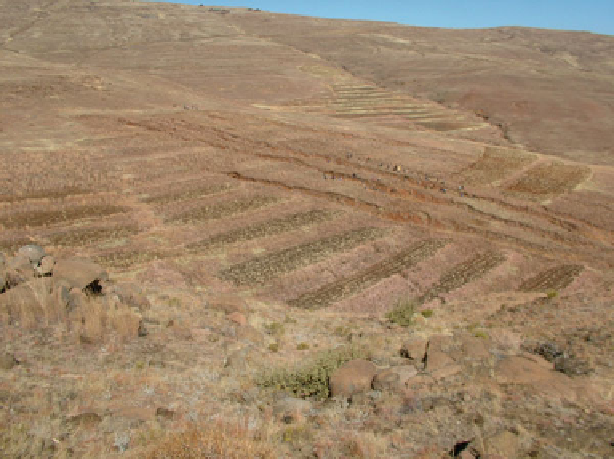Geoscience Reference
In-Depth Information
Fig. 8.3
Severe gullying in arable terraces in Lesotho
range management practices. Rangelands are communally used under control of the
chieftainship. As mitigation, the government is encouraging the establishment of
grazing associations in order to turn rangelands into a common property resource.
Each grazing association is given an area (range management area) that it controls.
It is believed that because of private gain, livestock owners will tend to manage and
use their range management area sustainably. There are big challenges facing this
new policy however largely rooted in group dynamics and political will (Fig.
8.4
).
The greatest part of the country is purely grassland (Fig.
8.5
). Lesotho is not a
forested country although it has small isolated pockets of indigenous forests and
shrub lands which are mainly within the sheltered valleys in the foothills and the
lowlands (Fig.
8.6
). These indigenous forests are managed by the chieftainship
and used communally for firewood. In order to meet the ever-increasing firewood
demand, the government through the Ministry of Forestry and Land Reclamation
embarked on afforestation programs. These were in the past focused on planting
exotic species such as Pine and Eucalyptus. In recent years however, indigenous
species have also been encouraged. Community forestry initiatives have been
encouraged including establishment of communal reserves and nurseries. To this
extent, most government activities are focused on providing firewood, sawn timber,
pole production and protection of land against erosion by relieving excessive over
cutting of indigenous trees and shrubs. The only indigenous forest falling under
protected area management is found in the Tsehlanyane National Park.

Search WWH ::

Custom Search